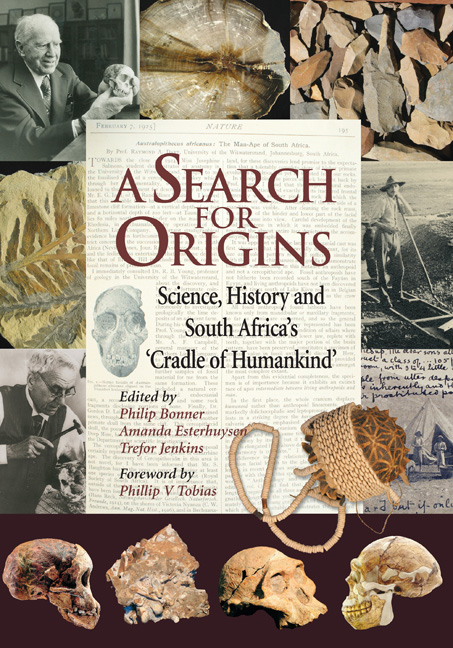Book contents
- Frontmatter
- Contents
- Map
- Foreword
- PART 1 Introduction: Africa is Seldom What It Seems
- PART 2 Introduction: Fossils and Genes: A New Anthropology of Evolution
- PART 3 Introduction: The Emerging Stone Age
- Chapter 6 The Earlier Stone Age
- Chapter 7 The Middle Stone Age and Later Stone Age
- Chapter 8 Rock Engravings in the Magaliesberg Valley
- PART 4 Introduction: The Myth of the Vacant Land
- PART 5 Introduction: The Racial Paradox: Sterkfontein, Smuts and Segregation
- Epilogue: Voice of Politics, Voice of Science: Politics and Science After 1945
- Notes, references and recommended reading
- Notes on contributors
- Acknowledgements
- Index
Chapter 6 - The Earlier Stone Age
from PART 3 - Introduction: The Emerging Stone Age
Published online by Cambridge University Press: 31 May 2019
- Frontmatter
- Contents
- Map
- Foreword
- PART 1 Introduction: Africa is Seldom What It Seems
- PART 2 Introduction: Fossils and Genes: A New Anthropology of Evolution
- PART 3 Introduction: The Emerging Stone Age
- Chapter 6 The Earlier Stone Age
- Chapter 7 The Middle Stone Age and Later Stone Age
- Chapter 8 Rock Engravings in the Magaliesberg Valley
- PART 4 Introduction: The Myth of the Vacant Land
- PART 5 Introduction: The Racial Paradox: Sterkfontein, Smuts and Segregation
- Epilogue: Voice of Politics, Voice of Science: Politics and Science After 1945
- Notes, references and recommended reading
- Notes on contributors
- Acknowledgements
- Index
Summary
The development of early hominid cultural behaviour is to be found in the first durable traces of material culture revealed by the archaeological record – stone and bone tools. Tools, in general, are objects or devices that we use to do a job more efficiently. We think of them as extensions of our own bodies that allow us to modify or manipulate things in our environment to our benefit. Humans are not the only tool users; animals like chimpanzees, birds and otters have been known to use tools. Humans, however, use tools all the time and depend on them for survival.We also use them in many different ways. The Earlier Stone Age, a period from about 2.5 million years ago to 250 000 years ago, gives us a glimpse into a time when our hominid ancestors began to exhibit limited tool use, not unlike that of the modern chimpanzee, and allows us to trace their progress as in time they became increasingly adaptable, inventive, flexible and creative.
The earliest tools clearly manufactured by hominids date to over 2.5 million years ago, and come from the site of Gona in Ethiopia. These tools show that early hominids (our early ancestors and their relatives) were not only able to select the most suitable raw material for their purposes – fine-grained, homogenous rock – but also knew how to flake it. Many of the bones found with these early tools bear cut marks, which have led scientists to conclude that early hominids were chipping flakes off cobbles to cut meat from animal carcasses. In this way it is thought that these early stone knives helped early hominids to scavenge a high-protein food source in the quantity needed to nourish, and in the long run develop, their brains – the brain being metabolically the most expensive organ in the body. Not all researchers believe that meat was necessarily the only source of high-quality food. They point out that seeds, nuts and various insects like termites also provided a valuable source of protein and fats. Studies of the tools indicate that both sources of food were probably exploited.
The Oldowan Industry
This early stone tools industry has been called the Oldowan Industry, after Olduvai Gorge in Tanzania where these tools were first recognised.
- Type
- Chapter
- Information
- A Search for OriginsScience, History and South Africa's ‘Cradle of Humankind’, pp. 110 - 121Publisher: Wits University PressPrint publication year: 2007



